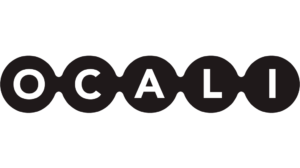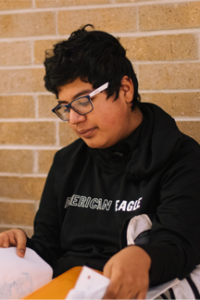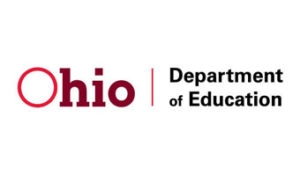
- Ohio Department of Education & Workforce
- OCALI Transition Resources
- Other Transition Resources
- Links Only
Career Connections is a joint initiative among the Governor’s Office of Workforce Transformation, Ohio Board of Regents, OhioMeansJobs, and Ohio Department of Education, that provides a framework by which K-12 students develop a vision and realistic plan for their futures. Career Connections provides decision-making materials, information, and tools that easily fit into classroom instruction at all grades levels.
Ohio Transition Support Partnership for Students Age 14
The Ohio Transition Support Partnership between Opportunities for Ohioans with Disabilities and the Ohio Department of Education is designed to improve postsecondary outcomes for students with disabilities. The model supports engagement beginning at age 14 for the vocational rehabilitation process. Students with disabilities gain skills to prepare for today’s in-demand careers needed to achieve high quality employment outcomes.
Secondary Transition Planning for Students with Disabilities
The Ohio Department of Education’s Secondary Transition Planning for Students with Disabilities webpage provides resources regarding transition planning, rules and regulations, and updates for educators and parents. Resource links for secondary transition include Understanding the Summary of Performance, the Ohio Longitudinal Transition Study, and the National Technical Assistance Center on Transition.
This page was updated August 9, 2021
 ASD Strategies in Action: Real-Life, Practical, Evidence-Based
ASD Strategies in Action: Real-Life, Practical, Evidence-Based
ASD Strategies in Action series gives families and service providers tools to ensure they are equipped to effectively care for, support, educate, employ, or work with individuals on the autism spectrum from early childhood to young adulthood. This video-based series of courses if free to anyone in Ohio and aims to build skills and strategies in regards to working with students with Autism Spectrum Disorder in the following age groups: Toddler and Preschool Age, School Age, and Transition Age.
Customized Employment Guide
The Customized Employment Guide provides a look at the strategies used in Customized Employment (CE) and links to more information and resources for those who are just beginning to explore CE. It explains how CE might benefit individuals with disabilities seeking employment and students in transition from school to work. CE is based on several evidence based transition practices such as self-determination, using self-advocacy strategies, and providing community based instruction.
Lifespan Transitions Center
The Ohio Center for Autism and Low Incidence (OCALI) Lifespan Transitions Center offers resources, training, technical assistance, and consultation to support the successful transition of individuals with autism and multiple disabilities throughout their school careers and into their adult lives. Resources address community living and employment. The site offers a series of resources and guides to help educators and other service providers assess and assist students with Autism Spectrum Disorder transition to adulthood.
Transition to Adulthood Guidelines
The Transition to Adulthood Guidelines are web-based booklets and printable assessment guides from the Ohio Center for Autism and Low Incidence (OCALI). A critical time for transition planning is in the early years of middle school through the first few years following graduation from high school. This time period is the focal point of the Transition to Adulthood guides and will assist the individual with ASD and his or her team in reviewing the issues of adulthood related to employment, postsecondary education, and adult living during these years. Implications for the individual with ASD to consider are highlighted throughout.
Use this set of guides as a reference and resource and to help frame a way to think about the issues related to adulthood. The Transition to Adulthood Guidelines currently includes Age-Appropriate Transition Assessment, Employment, IEP Transition Components, and School-Age Programming.
Transition to Adulthood Transition Video/Webcasts Library
The Transition to Adulthood Transition Video and Webcasts Library features short videos discussing transition-related topics relevant to students with Autism Spectrum Disorder. These videos are appropriate for students, educators or other involved adult service providers and include topics such as Community Support Programs for Young Adults with Disabilities, Employing Individuals with Autism, Guardianship, Job/Career Development and Preparing the Workplace to Support an Employee with an Autism Spectrum Disorder, Medicaid and Medicaid Waivers, The Importance of Internships, Focus on Community Living Issues, Transition to College, and more.
January 26, 2021
 National Technical Assistance Center on Transition
National Technical Assistance Center on Transition
The National Technical Assistance Center on Transition (NTACT) is a Technical Assistance and Dissemination project, funded by the U.S. Department of Education’s Office of Special Education Programs (OSEP) and the Rehabilitation Services Administration (RSA), Cooperative Agreement Number H326E140004. NTACT is funded from January 1, 2015 until December 31, 2019.
Its purpose it to assist state Education agencies, local education agencies, and state vocational/rehabilitation agencies and service providers in implementing evidence-based and promising practices ensuring students with disabilities, including those with significant disabilities, graduate prepared for success in postsecondary education and employment.
NTACT’s four major activities include: knowledge development, technical assistance and dissemination, leadership and coordination, and evaluation.
This section of the OCECD website offers a variety of student-led and student-centric resources promoting self-advocacy for transition-age youth, many of them video-based, including “5 Tips for Preparing for College Success,” “College Disability Resources: A Student Perspective,” “IEP Checklist for Teens” and other Youth Resources.
Setting Sail Transition Advice from Those Who Know
Developed by the University of Illinois at Chicago’s Division of Specialized Care for Children, Setting Sail Transition Advice from Those Who Know is a short video that can serve as an introduction to students and families concerning what transition means and why it is an important part of the IEP process. Students and their families discuss what transition means and how it helps guide a student’s experience in school and beyond.
Rights at the Age of Majority
The Transition Coalition developed the Rights at the Age of Majority brochure to assist families in understanding upcoming changes in their child’s legal status and prepare accordingly through transition planning. It is available in English and Spanish.
Worried About What Path Your Child Will Take After High School?
The Transition Coalition developed the Worried About What Path Your Child Will Take After High School? brochure to assist families in understanding the basics of transition planning, including its purpose, who is involved, and the process as a whole. It is available in English and Spanish.
Planning for a Healthy Transition: A Family Transition Plan
Created by the Washington State Department of Health, Planning for a Healthy Transition: A Family Transition Plan is a booklet that discusses health issues related to transition for students and/or families who are taking such topics into consideration.
PACER Center: Champions for Students with Disabilities
PACER Center enhances the quality of life and expands opportunities for children, youth, and young adults with all disabilities and their families so each person can reach his or her highest potential. PACER operates on the principles of parents helping parents, supporting families, promoting a safe environment for all children, and working in collaboration with others. The videos and other resources at this site, including the “Transitioning to Life After High School” section directly linked here, were all made by, with, or for young people with disabilities to help them answer questions about their future.
This page was updated July 29, 2021
 Career Connections
Career Connections- National Technical Assistance Center on Transition or NTACT
- Ohio Transition Support Partnership
- OCALI: ASD Strategies in Action Series
- OCALI: Customized Employment Guide
- OCALI Guidelines to Transition: View All Booklets (Individual booklets listed below)
- OCALI: Lifespan Transitions Center
- OCALI: Transition to Adulthood Transition Video and Webcasts Library
- Planning for a Healthy Transition: A Family Transition Plan
- Resources for Essential IEP, Essential ETR, and Post-Secondary Transition LiveBinder
- Rights at the Age of Majority
- Secondary Transition Planning for Students with Disabilities
- Setting Sail Transition Advice from Those Who Know
- Worried About What Path Your Child Will Take After High School?


